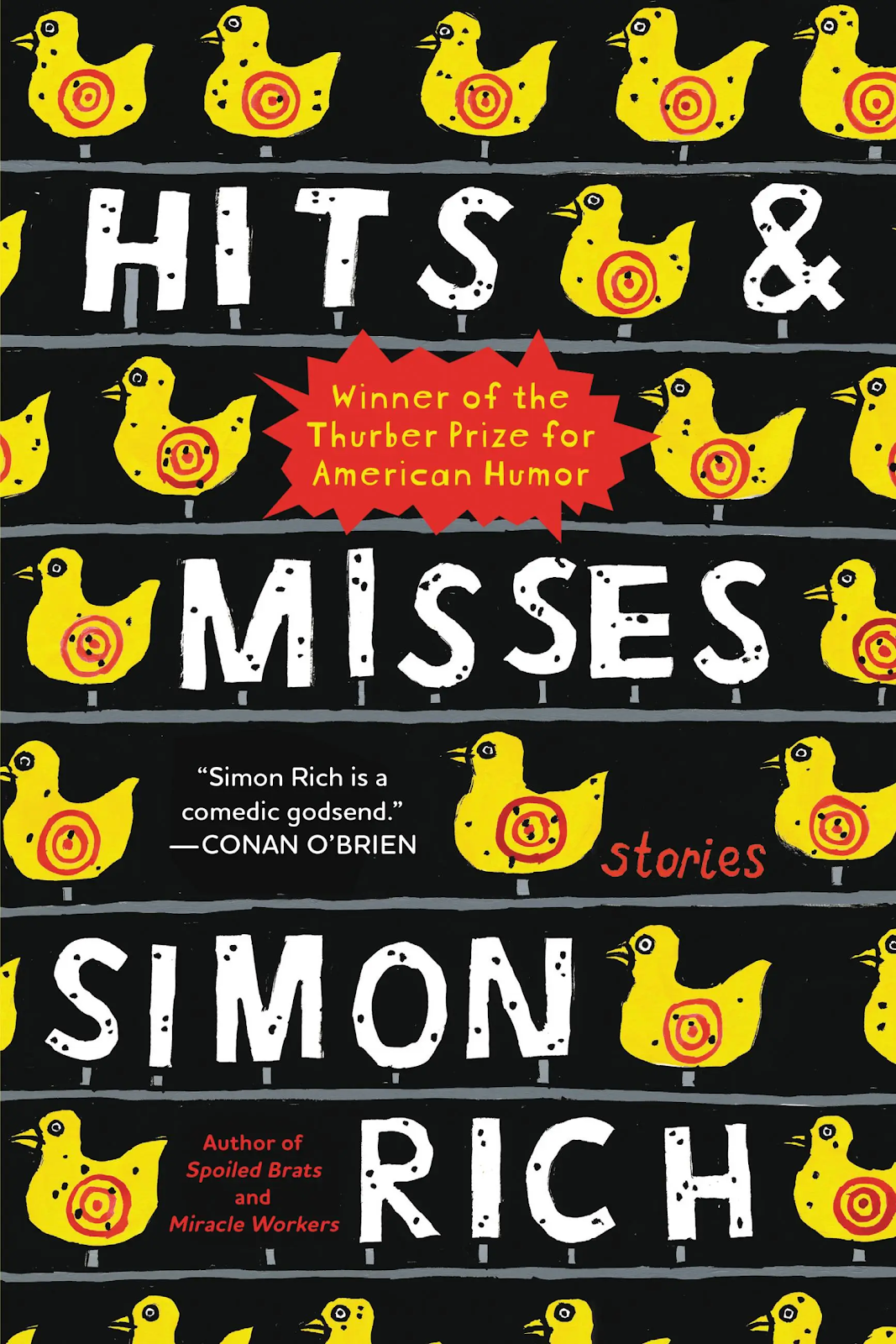Simon Rich, Ostranenie, and Being Funny
If you think you don't know Simon Rich, you're wrong.
I became obsessed with Rich's work back in early December. I was lamenting to myself the other day how I couldn't talk to anyone about his fantastic work, because no one would care, and it wouldn't be interesting or fun to anyone other than me. But then I remembered I have a blog.
Simon Rich, though quiet in his fame, is a fantastic writer responsible for many beloved TV shows, SNL sketches, movie scripts, and short stories. Notably, Rich wrote on SNL from 2007-2011, partnered with John Mulaney and Marika Sawyer. He co-wrote the sketches What's That Name, and New Boyfriend Talk Show, both of which I remember loving as a kid. He wrote on Inside Out. He also created the shows Miracle Workers and Man Seeking Woman. Rich has written two novels and seven short story collections. Needless to say, the man's prolific.
Rich, similar to writers like Bradbury, writes premise stories, looking at a classic idea from an "original, creative and visceral way". His premises are so fucking weird. Mario has a mid-life crisis, Paul Revere's horse's bitter expose on "The British are Coming", a hamster's perspective on the torturous life in a kindergarten classroom; just to name a few. And yet, despite each of the insane plots- his stories are grounded in human emotion.
Rich's latest book Glory Days, includes a story called "We're Not So Different You and I", about a supervillain's quest to make friends. Interestingly, when asked what the collection was about, Rich didn't mention any absurdism, rather that it was "a book of stories about millennials struggling to make the leap from childhood to old age".
In my opinion, Simon Rich is the master of my favorite English major buzzword, ostranenie. Ostranenie, or defamiliarization, is the process of presenting normal things in a unfamiliar way. Defamiliarization is used a lot by authors, either for humor or imparting a political message. In Slaughterhouse-Five, author Kurt Vonnegut practically abuses the technique. In one scene, Vonnegut describes a documentary on WWII. The description focuses on the documentary in reverse, describing explosions that turn into bombs which turn into machine parts which turn into metal which goes in the ground; effectively making readers reconsider why wars happen.
Rich uses this technique often in his set-ups to make his humor really pack a punch. His story "A Man Walks Into a Bar", based on the classic structure, is a prime example. In the original joke, a hard of hearing genie grants a 12-inch pianist instead of well... you know. Rich's story is, in turn, essentially an anti-joke, a subversion of the structure that plays with ideas of wanting and being wanted.
Viktor Shkolvsky, father of defamiliarization, once said that "the purpose of art is to impart the sensation of things as they are perceived and not as they are known", and Rich does just that. Rich melts, molds, hammers, and shapes simple facets of human existence into absurdist narratives. When Rich writes “I know the odds are against us. I know she’s a siren. I know she’s eaten people. I know she’s five thousand years older than me. But I really like her.” (The Last Girlfriend on Earth: and Other Love Stories) he might be talking about a crazy siren monster lady, but he's also talking about irrational love. We've all been there. Hell, I've liked people that suck. People that I know suck. Like just, oh my god, so annoying in retrospect. And yet, at the time, when I saw these sucky, sucky people, my heart beat out of my chest, my hands got sweaty, my cheeks flushed. It was irrational. But it was also very real. By turning the monstrous people we love into real, loveable monsters, Rich zooms in what its like to feel that way. The sensation of it, how we perceive it, and not how it's known.
If you haven't read any of Simon Rich's books, I couldn't recommend him more. I won't shut up about him. I refuse. I will rant about him to anyone that will listen! But I worry now, at the end of this blog post, that I might have scared you off reading his stories. While I love to wax poetic about literature analysis, I promise you his books are simple, charming, and hilarious. They're also an easy read for a grey, rainy day like this one. My personal favorite is Hits and Misses (COUGH available at the Daniel Boone Regional Library COUGH). But if you're too lazy to check out a book he has plenty of short stories available online and in The New Yorker, my favorites of which I will link below.
If you do read his books, please tell me. Please. I have no one to talk to about this.





Good read with good references/sources/quotes. I haven't written in some time and this feels like a call to return to things that make me want to write. I haven't had much experience with short stories since I trailed off reading all of the ones for which the chapters are named in Gabrielle Zevin's The Storied Life of AJ Fikry. I'll have to look into Hits and Misses.
ReplyDeleteThank you! That actually means so much. I haven't read The Storied Life of AJ Fikry but it sounds really good so I'll have to check it out.
DeleteThis has inspired me to read a Simon Rich book, and also taught me a new word. I will check out Hits and Misses at the Daniel Boone Regional Library at the soonest opportunity. Amazing work Katherine.
ReplyDeletethank you :)
Delete